The Perfect Boot That You And Your Horse Needs
Injuries on the field have their own invitation. However, precaution is better than cure. The perfect boot for your leg is the perfect way you can help yourself and your pony to avoid mishappenings. A good boot fit is the most you can ask for when it comes to getting a good boot.

A good-fitting boot should feel like a firm handshake. While walking in your boots, you should feel like walking on a silk mattress. That is the quality of boots needed for sports polo. In the retrospection of events, injuries with boots have been recorded to be the least but that in no way means it should be left ignored. A comfortable leg fit plays an important role in the game. Until and unless the player is comfortable with his horse and in himself, there are least chances that he can get in the match stay long enough. Ankle sprains are a common sports injury that can cause significant, chronic disability, sore ankles, and anytime result in the player leaving the field because of the inability to play any further. Getting yourself poor-quality polo boots might result in complications during the play. High-quality riding Polo boots are an absolute must for polo and in fact many other sporting games.
Polo Boots should be made from thick, quality, and efficient leather with plenty of support and protection at the ankle, toe, and front foot where the stress is maximum, and a good sole that provides sporty comfort, rugged sophistication, and sleek style. Zipped boots make it much easier to get them on and off and are convenient, however, they are not usually prepared for Polo because of the uncertainty of its opening. Ankle-wrapped the cushion, footrests on soft pads, and special footwear have been introduced to ensure biomechanical aspects of foot and ankle anatomy, proprioceptive input of the foot/ankle complex, external stresses applied to the joint, and shoe traction. To prevent blows, scratches, and sprains in the ankle and tiptoe including the heels and the front sole, and protect the tendons, they must be wrapped with elastic bandages or rubber polo boots, with properly stuffed pads to provide comfort and ease in walking and landing it on the spur of the horse. An efficient pair of polo boots should also be combined with quality regulation polo spurs. Poorly fitting, low-quality spurs can create all kinds of issues, including problems with balance and stumbling in holding the foot firmly. There are some provinces that encourage the use of high-top shoes to prevent ankle sprain because of their ability to limit extreme ranges of motion, provide additional proprioceptive input and decrease external joint stress. A good pair of polo boots adds to your performance on the field. To perform well enough, a good-looking riding boot also needs to provide flexibility and agility in the saddle. Boots in play must protect the player’s legs from rogue balls, other horses, and player collisions as well as provide a surface to grip the horse firmly. With both elegance and performance, the right riding polo boot provides a leg up on the competition and brings you closer to the goal.
THE PERFECT BOOT FIT PRACTICE FROM THE LUCCHESE GUIDE
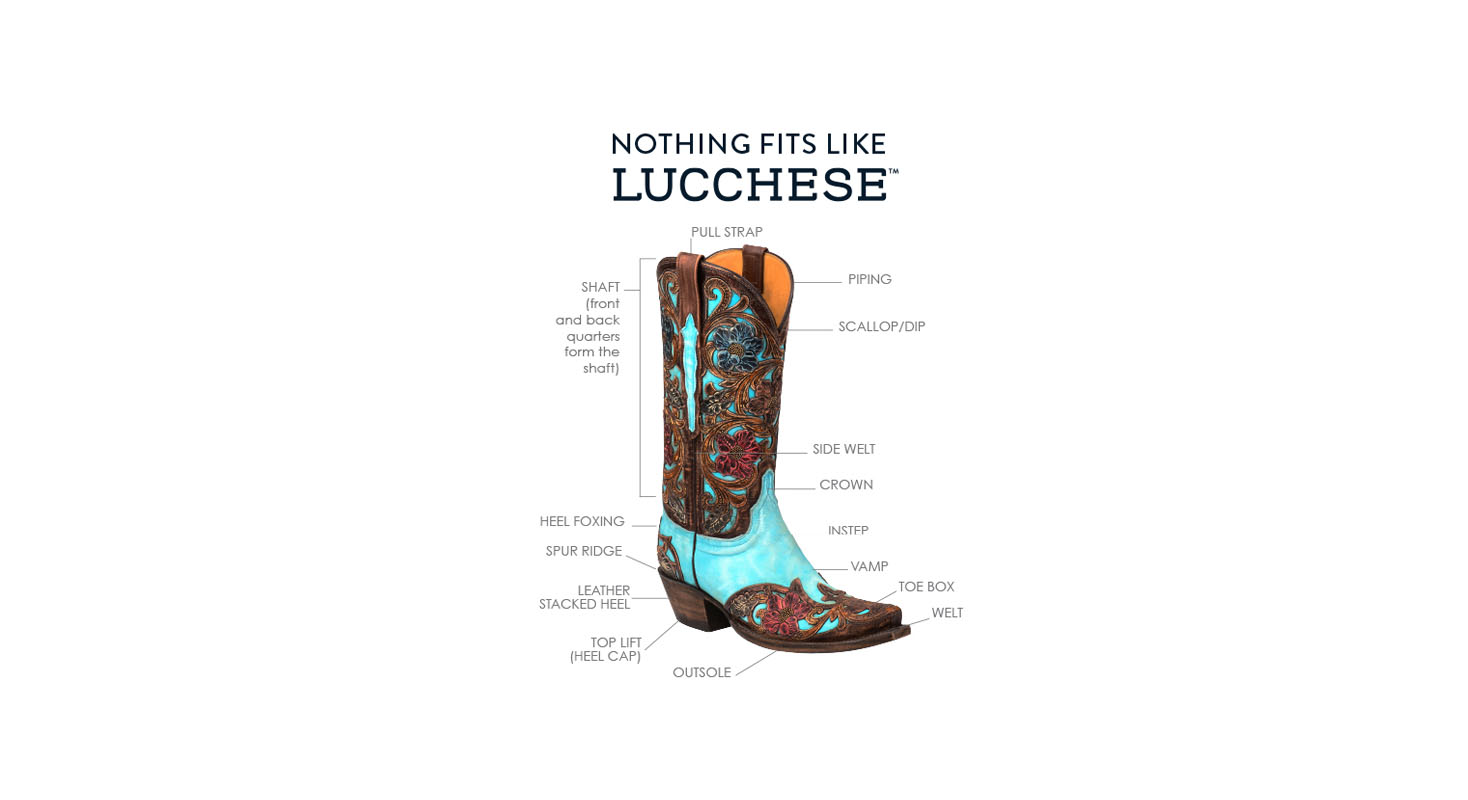
Getting a perfectly fit boot for your leg is just as difficult as getting a perfect dress for a lady, you just don’t get satisfied! However, there are ways where you can measure the size of your leg and then get the boots accordingly.
The brand Lucchese gives you a guide to getting the perfect boots fit. Put your index finger into the fore straps and settle your foot inside the boot. In a properly fitting boot, you should feel resistance as your heel comes in contact with the back of your boot. Use your body weight to pull your boot to the top. You should feel satisfied as your foot settles into the footbed. Because the front of your foot is the widest part of your foot, it should fit snugly across the widest part of the boot. You should have a snug fit across the strap. The leather insoles and outsoles are designed to mold the shape of your foot over time. They will be rigid when you first put on your boots and your heel will slip naturally up to half an edge. This slip will go away as your boots break in. Lucchese Bootmaker has used time-honored craftsmanship techniques to build his uniquely designed handmade boots of unrivaled fit, comfort, and style. Because of their hand-lasted nature of making, each pair of Lucchese boots differs slightly in its craft-making. With continuous wear, the leather on the boots molds to the contours of the foot, personalizing both the boot and the fit. The rule of thumb states the boots fit about a one-half size smaller than the everyday dress shoes. In case the polo boot has a padded footbed, then the boot will fit in size. once you're done buying your boots you need to break in your boots. The process requires three steps where the first one is to coat your boots with natural leather conditioner. Secondly, for the first 4-6 outings do not wear them for more than 3-4 hours. The continuous wear helps the boot to absorb your body heat and moisture and also softens the leather. Over time, the heel conforms to the shape of your foot, providing an adequate and comfortable fit. Thirdly, the more you wear your boots, the more comfortable they get over time. Soft leathers including goat and cowhide have naturally more elasticity than exotic leathers. Mostly the alligator or ostrich should be fitted with either little or no additional stretching.
DO YOU TAKE CARE OF THE PROPER MAINTENANCE OF YOUR BOOTS?
In order to preserve the luster, appearance, efficiency, and durability of your boots, there is a clean-condition-polish-protect process that you must follow. The protection definitely depends on the kind of leather of your boots.
Smooth leather: To clean your polo boots brush them off with a damp cloth or a soft brush. To condition them, apply a leather conditioner and apply a neutral or matching cream-based polish, and buff it with a soft cloth.
Suede/stone-washed leather: Before wearing the boots treat them with a non-silicone water and stain protector. Brush the dirt with a damp cloth or a soft brush. Avoid polish and creams over the stone-washed polo boots as it will damage them. Apply non-silicone water and stain protector. The most important thing you need to keep in mind is to keep them in a place that allows them to breathe. Avoid them from light and damp environments. If the suede gets wet, soak up the excess moisture with a clean towel and allow it to dry naturally without using any dryer. Finally, Use a nail file or a wire bristle brush to remove dry mud and scuff marks with gentle strokes.
Exotics: To clean the boots brush off the dirt with a gentle cloth and then apply the exotic leather conditioner in several thin layers. Apply a neutral-based or color-based polish over the boots and then apply the non-silicon after and the stain protector. While you're cleaning conditioning and protecting the boots go with the grains of the scales and avoid polishing.
When it comes to maintaining your boots due to usage and continuously worn, there are ways that you can mend them. For your outsoles and heels that are rugged and you want to bring them back to life, apply an edge dressing polish — a product designed solely to retouch and care for your polo boots' foundation. After cleaning or becoming wet, allow the polo boots to dry naturally at room temperature and avoid any direct contact with heat to dry them. Using cedar boot trees in your polo boots will help them maintain their original shape and prevent your polo boots from curling. Regular and continuous use also allows moisture to absorb into the cedar, which naturally eliminates odor, and therefore there is a high risk of you smelling and putting your horse in danger!
WESTERN BOOT STYLES
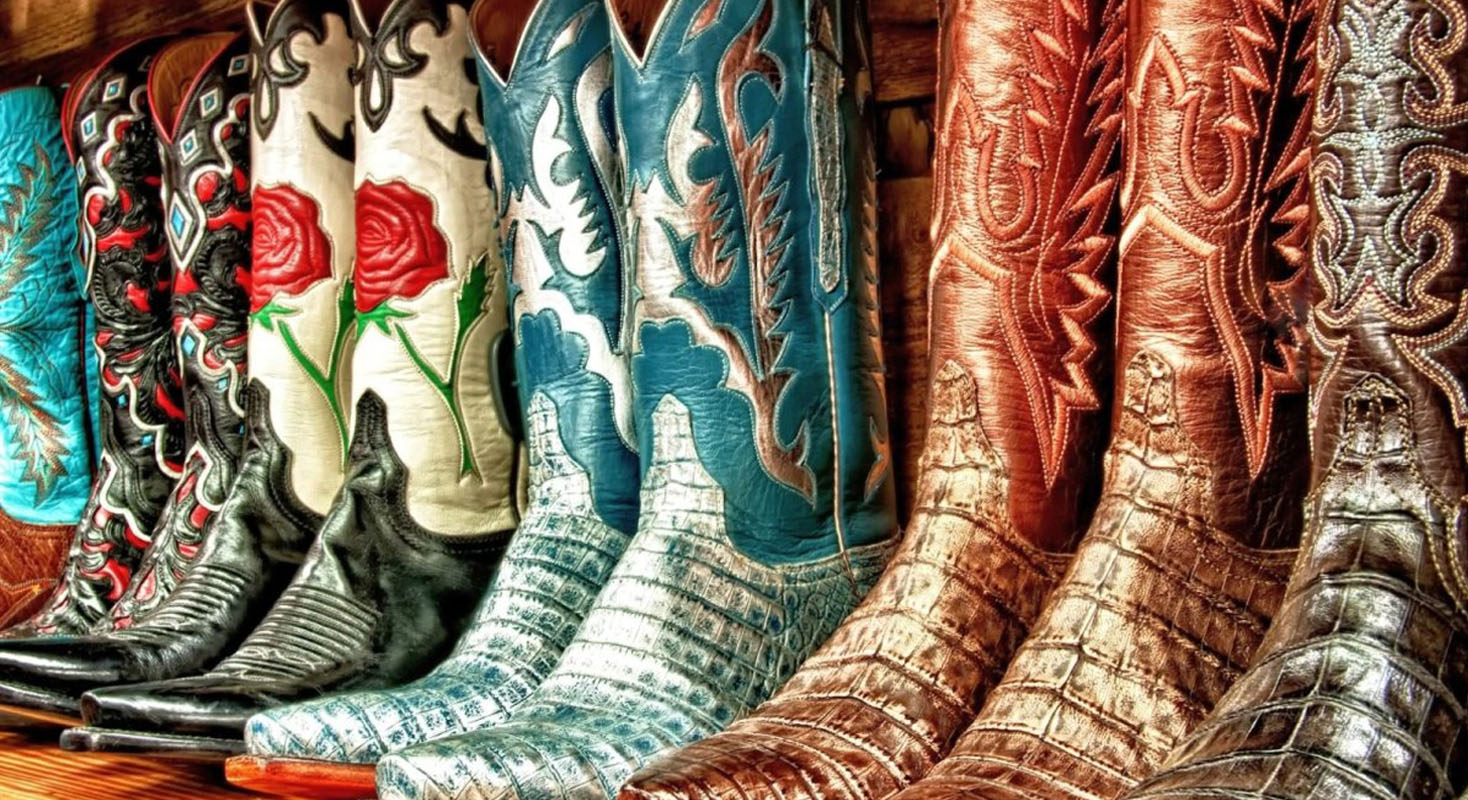
Also known as cowboy boots, the western polo boots styles have been the most popular. Western Polo boots have a heel slightly higher than English boots. Worn by both men and women, these boots are fashionable all over the globe. Crafted with extensive care, these boots possess not just grace and unique style but also are comfortable. Some western-style polo boots also have crepe soles, which may not slide out of the stirrup easily. You find ankle-height polo boots that might be more comfortable if you wish to ride in half chaps and all these polo boots will provide you with good stability and protection throughout. The inexpensive boots are made with either the upper or lowers, or both made of vinyl. This is often less comfortable for your feet and may break down faster than a good pair of leather boots. They may not breathe like leather, but they are easier to clean up if they get soiled and comparatively high maintenance is not essential.
ENGLISH BOOT STYLES
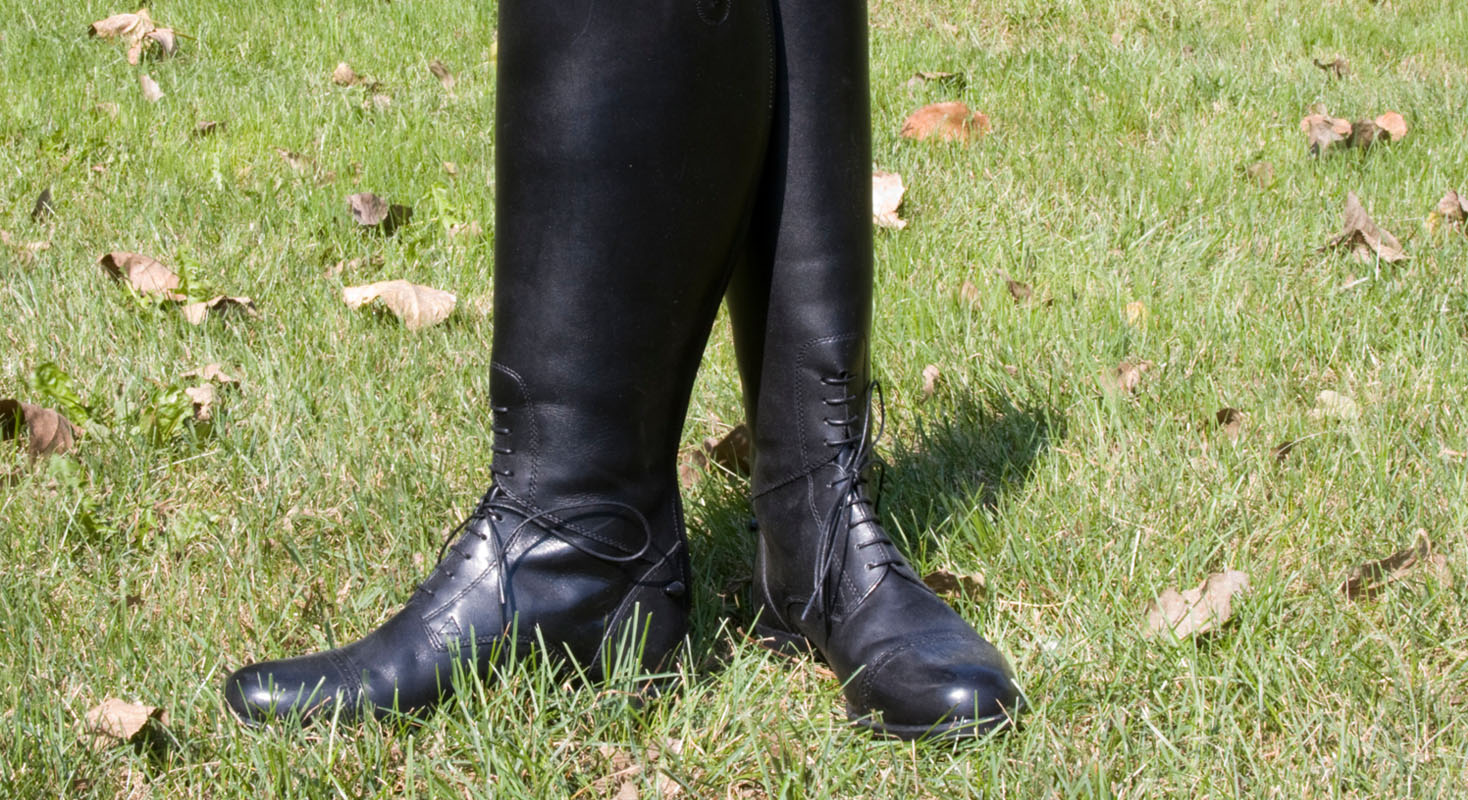
The British pair of boots come in different styles, shapes, and designs, satisfying the needs of every rider’s choice. Some rider finds tall boots as comfortable as floaters and good protection and some find them tiring and cumbersome. Polo field boots look like dress boots but have a lace up over the instep and are worn in the hunter show ring. They are more comfortable if you have a foot with a high instep and their lace makes it a little easier to get in and out. All English polo riding boots have a small heel as mentioned earlier, typically about 1" high, to help prevent a rider’s feet from sliding through stirrup irons. English Riding polo boots are offered in styles for three-season riding and in insulated waterproof versions for protection and comfort in the winter environment. The first type, Paddock boots, sometimes called jodhpur boots, can be made of full-grain leather, calfskin leather, or man-made leather. Genuine leather paddock boots are mostly traditional, breathable, and soft once they break in. Secondly, Synthetic leather paddock boots are exceptionally easy-care and budget-friendly. Men’s riding boots, women's, and children's rise to just above the ankle with nominal heels. In English riding disciplines, riders over the age of 12 usually pair paddock boots with leather, suede, or synthetic half chaps to simulate the performance of a tall riding boot.
GET THE PERFECT BOOTS FOR YOUR HORSES
Unlike most horses, some horses are more prone to getting themselves into interruption, forging, and injuries. To protect horses from injuries leg boots help protect the delicate structures of the leg from bumps against obstacles, or from the horse's own hooves. These horses' polo boots also help in supporting the tendons and ligaments in the legs, as performance horses can be prone to staining these tissues. Horses have no padding from muscle tissue in the lower leg, so horse boots can help prevent potentially debilitating injuries and save them from mishappenings. Usually, horses don’t need the boots to protect them but often poor conformation causes them to hit themselves, especially after they get tired. quite a time young horses are seen hitting themselves due to imbalance. It's important that horses' boots fit well, are kept clean and in the case of bell boots used for stabling or turn out, are checked and investigated frequently in case the boots are chafing. Continuous use of horses' boots can lead to sweating, excessive grit, and the formation of dust layers that will render the boots uncomfortable to wear. Therefore regular cleaning and maintenance of the horse boots are required.
BELL BOOTS
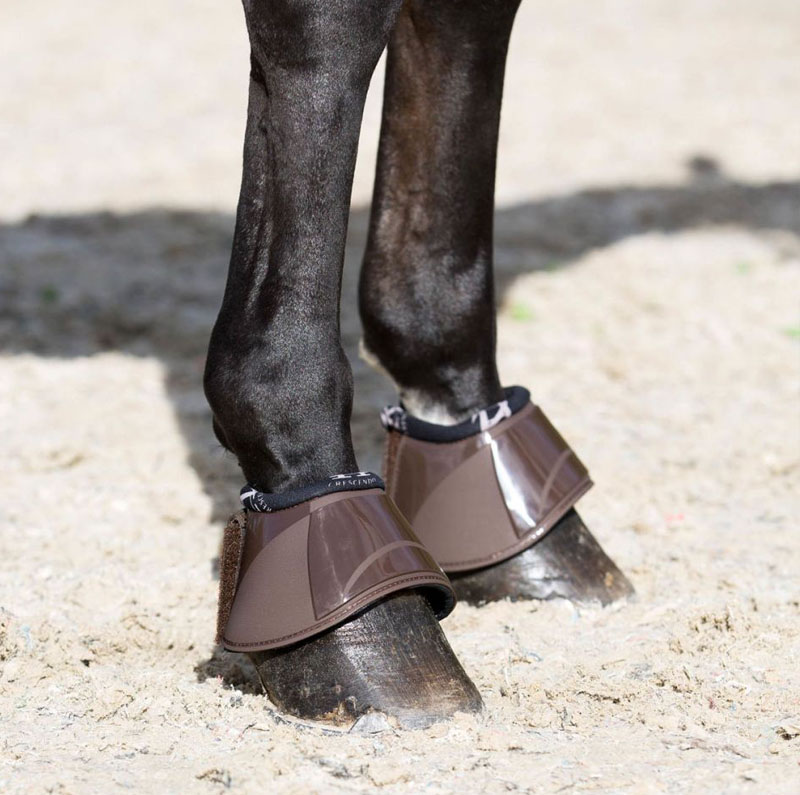
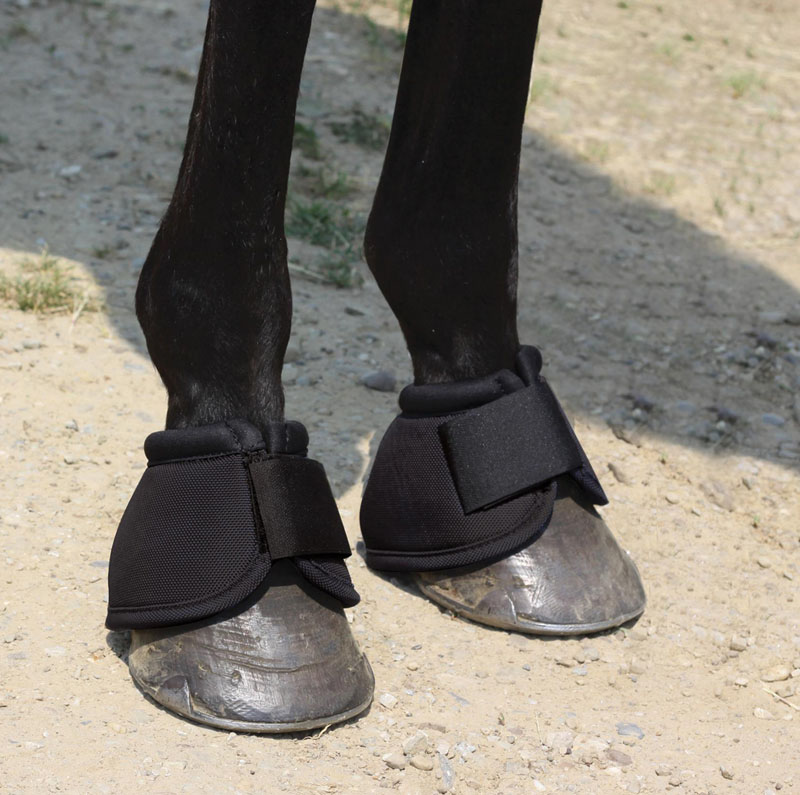 Boots made of rubber, heavy synthetic material, or leather lined with fleece are worn in the stall or paddock, or while ridden. These horse boots provide a comfortable fit and they prevent the horse from hitting itself, especially where the terrain might be rough or muddy, and where a horse is negotiating obstacles like jumps and hurdles, provide some protection from hitting a hard surface. These boots encircle the pastern and the bell shape of the horse boots covers the entire hoof enabling them to be worn either on the front or on the back.
Boots made of rubber, heavy synthetic material, or leather lined with fleece are worn in the stall or paddock, or while ridden. These horse boots provide a comfortable fit and they prevent the horse from hitting itself, especially where the terrain might be rough or muddy, and where a horse is negotiating obstacles like jumps and hurdles, provide some protection from hitting a hard surface. These boots encircle the pastern and the bell shape of the horse boots covers the entire hoof enabling them to be worn either on the front or on the back.
SPLINT BOOTS
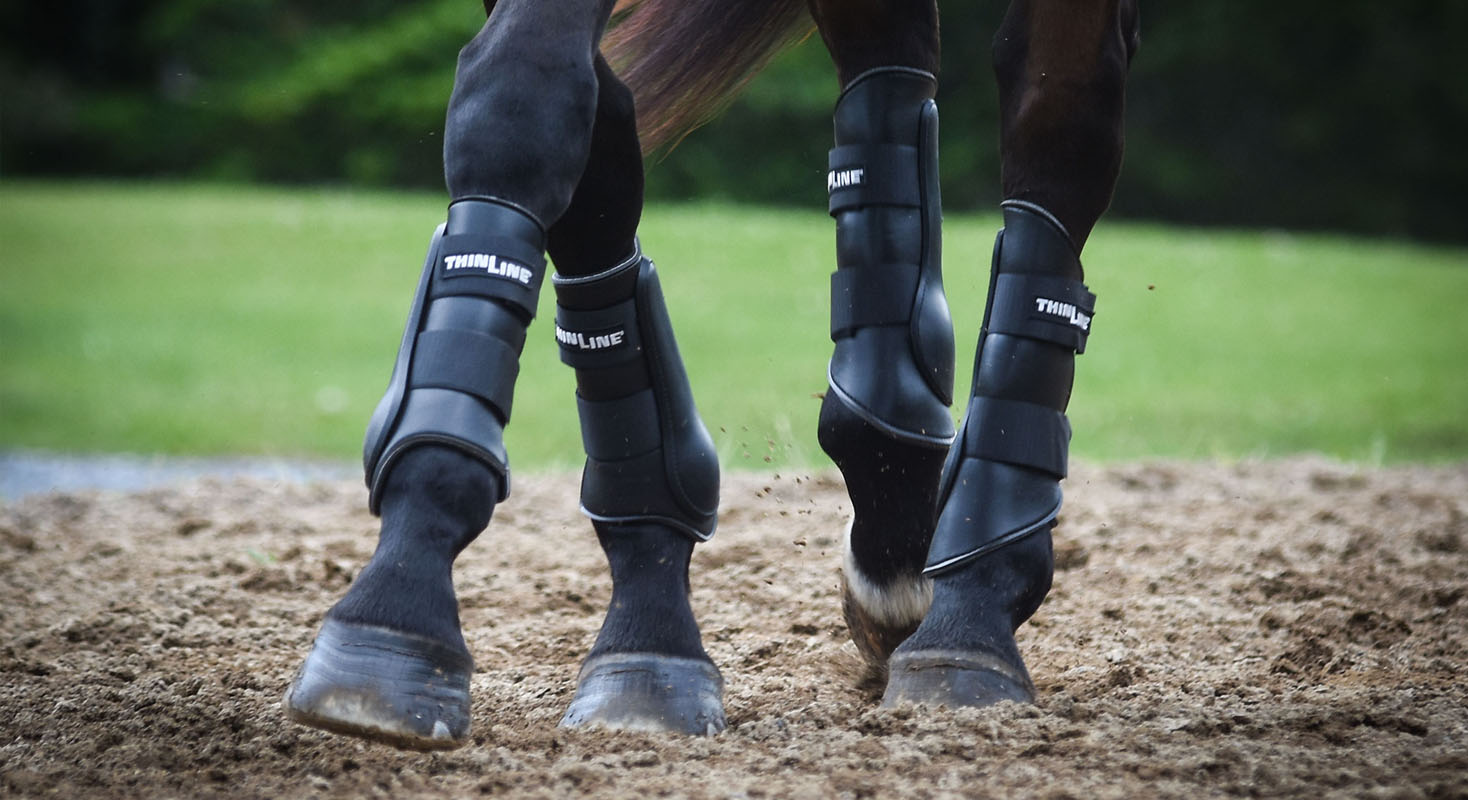
Brush or splint boots are made of synthetic materials or leather. The horse boots can be worn on the front or the hind legs however they are usually preferred on the front legs to prevent them from hitting themselves during hard work. Most often these boots are worn at the time of lunging especially when the canter work is under process, then they can also be used at the time of jumping, reining and other fast-moving sports where the horse has a probability of hitting his own hoof. These horse boots sit at or above the pastern joint and protect the lower bones and soft tissue of the lower leg. These horse boots are not exactly for support, but for protection, rather like shin pads. The thicker padding on the inside of the horse boot protects the delicate splint bone along the inside of the cannon bone. When putting on any type of boot on the horses the straps must be done up, so the tail ends point backward. This would make it less likely that the strap will get caught up on twigs or on other obstacles.
SKID BOOTS
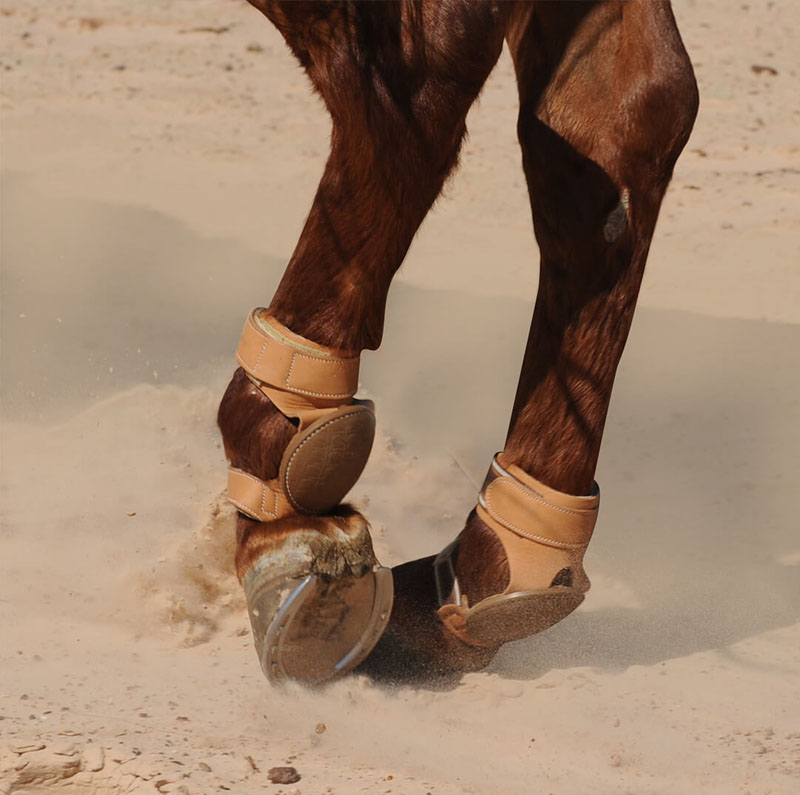
They are made of leather and fleece or synthetic material that provides cushioning. Skid boots are designed to protect the hind fetlocks and pasterns, which provide support including protection from contact with the riding surface during fast stops and turns. You'll see these horse boots most commonly on riders who do sliding stops and cutting horses. Closures for these horse boots are most often buckles or hook-and-loop fasteners.

